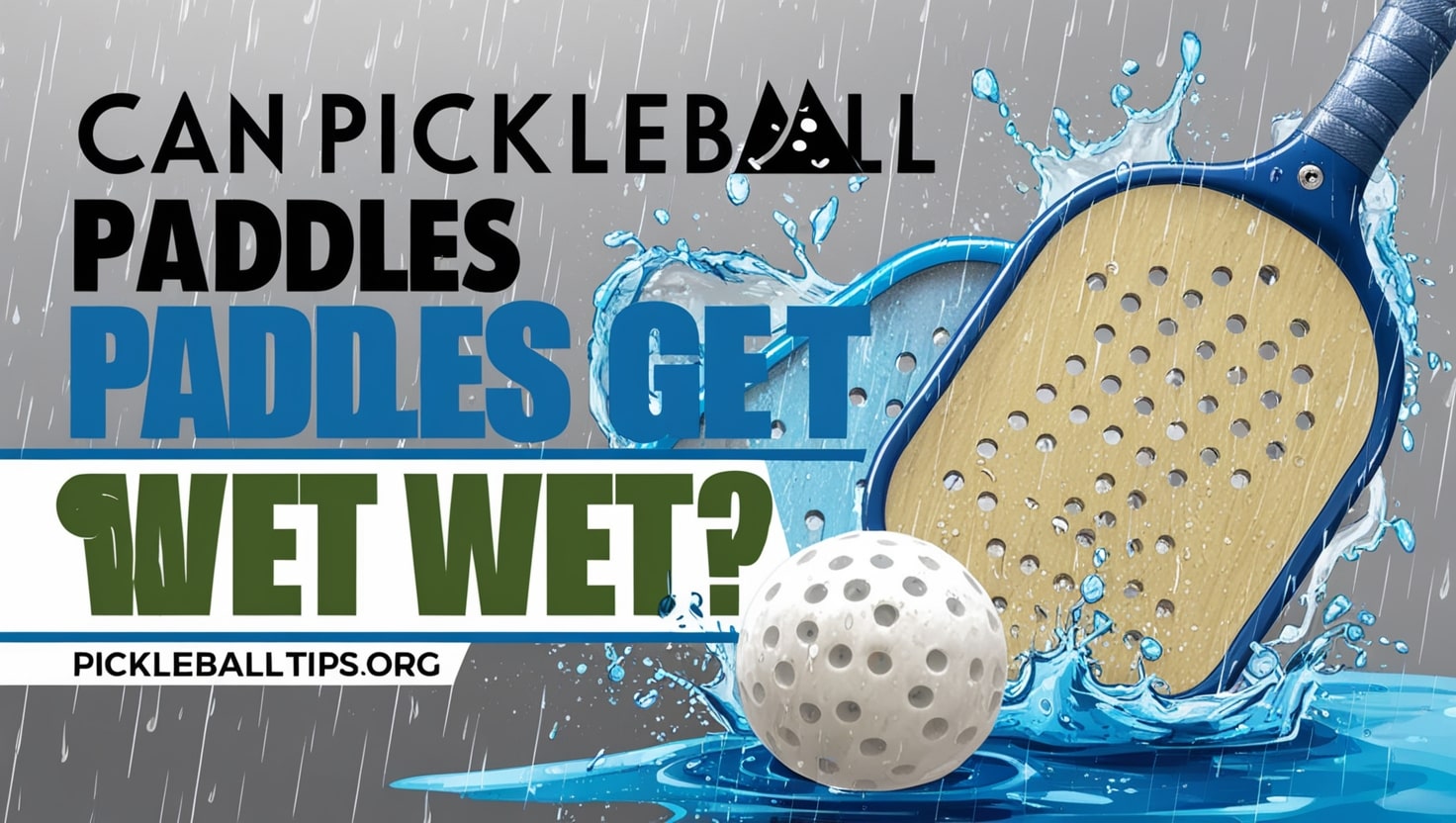When it comes to pickleball, enthusiasts are always looking for ways to improve their game and take care of their equipment. Among the questions frequently asked is: Can pickleball paddles get wet? Understanding how water affects pickleball paddles is crucial for maintaining their performance and longevity. This article will provide a comprehensive guide to answer this question and offer tips to protect your paddle.
Can Pickleball Paddles Get Wet?
The short answer is yes, pickleball paddles can get wet. However, exposure to water may not be ideal depending on the type of paddle you own. While some paddles are designed with moisture-resistant materials, prolonged exposure to water can degrade others, leading to compromised performance and a shorter lifespan.

What Are Pickleball Paddles Made Of?
To better understand how water interacts with your paddle, let’s first examine the materials commonly used in their construction:
1. Wooden Paddles
Wooden paddles are the most affordable and beginner-friendly option. However, they are not highly resistant to moisture. Prolonged exposure to water can cause the wood to warp, swell, or even crack.
2. Composite Paddles
Composite paddles are made from materials like fiberglass or carbon fiber and often have a polymer core. These paddles are generally more resistant to water than wooden ones. However, if water seeps into the paddle’s core through cracks or weak points, it can lead to internal damage.
3. Graphite Paddles
Graphite paddles are lightweight and durable, making them popular among advanced players. While the outer surface of graphite paddles may resist water, their cores are not waterproof. This means prolonged exposure to moisture could still cause issues.
The Effects of Water on Pickleball Paddles
Now that we know what pickleball paddles are made of, let’s explore how water impacts them:
1. Weight Alteration
Water can make your paddle heavier, affecting your swing speed and control during a game. Even a small amount of moisture trapped inside can alter the balance of the paddle.
2. Structural Damage
If water penetrates the paddle’s core or material, it can cause warping, swelling, or even delamination. These structural changes can lead to decreased performance and a shorter lifespan.
3. Grip Complications
The grip of your paddle is often made of moisture-absorbent material for comfort. If exposed to water, the grip may become slippery or degrade, making it harder to maintain control during play.
How to Protect Your Pickleball Paddle From Water Damage
Proper care and maintenance can help you protect your paddle from water damage. Here are some tips to keep your paddle in top shape:
1. Invest in a Paddle Cover
A paddle cover is an excellent way to protect your equipment from moisture, especially when transporting it. Choose a padded and waterproof cover for maximum protection.
2. Dry Your Paddle Immediately
If your paddle gets wet, dry it thoroughly with a soft towel. Avoid using heat sources like hair dryers, as excessive heat can damage the paddle’s materials.
3. Store Your Paddle in a Dry Place
When not in use, store your paddle in a cool, dry location. Avoid leaving it in damp areas like basements or car trunks.
4. Use Overgrips
Overgrips not only enhance your grip but also provide an additional layer of protection against sweat and moisture. Replace them regularly to ensure optimal performance.
Playing Pickleball in Wet Conditions: What You Should Know
While it’s generally advisable to avoid playing pickleball in wet conditions, there are times when it might be unavoidable. Here’s what you need to keep in mind:
1. Rainy Weather
Playing in the rain increases the likelihood of your paddle getting wet. If you plan to play in wet conditions, consider using a moisture-resistant paddle and wearing gloves for better grip.
2. Sweaty Hands
Even if you’re not playing in the rain, sweaty hands can transfer moisture to your paddle. Using wristbands and wiping down your grip between points can help minimize this.
3. Wet Courts
Wet courts can cause balls to skid and pick up water, which may transfer onto your paddle. Be cautious and wipe down both the paddle and ball regularly during play.
How to Clean a Wet Pickleball Paddle
If your paddle gets wet, cleaning it properly is essential to prevent damage. Follow these steps:
- Wipe the Surface
Use a soft, lint-free cloth to gently wipe away moisture from the paddle’s surface. - Inspect for Damage
Check for any cracks, chips, or other signs of water damage. If the paddle appears compromised, consider consulting the manufacturer for repair options. - Clean the Grip
Remove the overgrip if it’s soaked and replace it with a dry one. Clean the handle using a damp cloth and dry it thoroughly before reapplying a new grip. - Let It Air Dry
Place the paddle in a dry, ventilated area and allow it to air dry completely. Avoid exposing it to direct sunlight or high heat.
Choosing the Right Paddle for Wet Conditions
If you frequently play in humid or rainy environments, selecting a moisture-resistant paddle can make all the difference. Look for paddles with features like:
- Sealed Edges: Prevents water from seeping into the core.
- Water-Resistant Coating: Protects the paddle’s surface from moisture.
- Durable Core Materials: Ensures longevity even in challenging conditions.
Final Thoughts
So, can pickleball paddles get wet? While most paddles can handle a bit of moisture, prolonged exposure to water can negatively impact their performance and lifespan. By taking the necessary precautions, you can protect your paddle and ensure it remains in excellent condition for many games to come.
Thank you for reading this guide on can pickleball paddles get wet! We hope you found it helpful. For more tips and insights, visit our website pickleballtips.org. Keep playing, stay safe, and protect your paddle!
